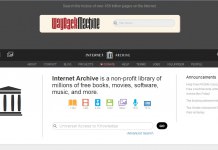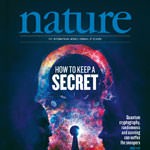![]()
From the press release:
The Scientific American archive brings together over 100 years of content highlighting advancements in science, technology, and medicine. Institutional customers can now access every issue of Scientific American back to January 1910. Scientific American, part of Nature Publishing Group (NPG), entrusted the scanning and digitization of most of the paper archives to MPS Limited‘s archive conversion unit, following MPS’s successful digitization of NPG’s flagship journal, Nature.
The MPS team designed a set of specialized in-house tools to convert each issue to XML before publishing it online. The text of the content is fully searchable and is presented in PDF form to preserve the look and feel of the original issues. Work to expand Scientific American’s archive back to 1845, its first year of publication, is currently under way. Appligent Document Solutions is also assisting in the digitization of theScientific American archive.
Scientific American’s online archive reveals a wealth of treasure from the magazine’s history. Gems include: a 1932 article called “And Now the Neutron;” the 1954 article prophetically entitled “Computers in Business;” the landmark 1988 single-topic issue “What Science Knows About AIDS” featuring contributors Robert C. Gallo and Luc Montagnier, the co-discoverers of HIV; and policy pieces including the 1990 Al Gore essay, “A New Initiative to Save the Planet.”































All that effort they put in, and I still can’t read their magazines on my Nook Color…
“Institutional customers” only …
Why the heck is it institutional customers only? My Sciamdigital subscription allows me to see back to 1993. I’d gladly pay double more to see back to the beginning.
Why is it not free of charge? Especially all of the issues published before about 1935. Almost everything before then has to be in the Public Domain. They no longer have the right to keep that material from the public for any reason. The monopoly has expired.
Off topic: What happened to the login widget. There seems to be no way to sign in on this website anymore. I really do not want to have to do a captcha every time I want to say a word or two. I also refuse to have a Facebook account (I have not been assimilated — yet).
The oldest SciAm material is certainly in public domain, but it’s still SciAm’s right to charge for digital versions of it through their site if they wish… the same as bookstores are within their right to charge you for a copy of The Time Machine. They took the time and effort to convert it to a digital archive… that’s worth something.